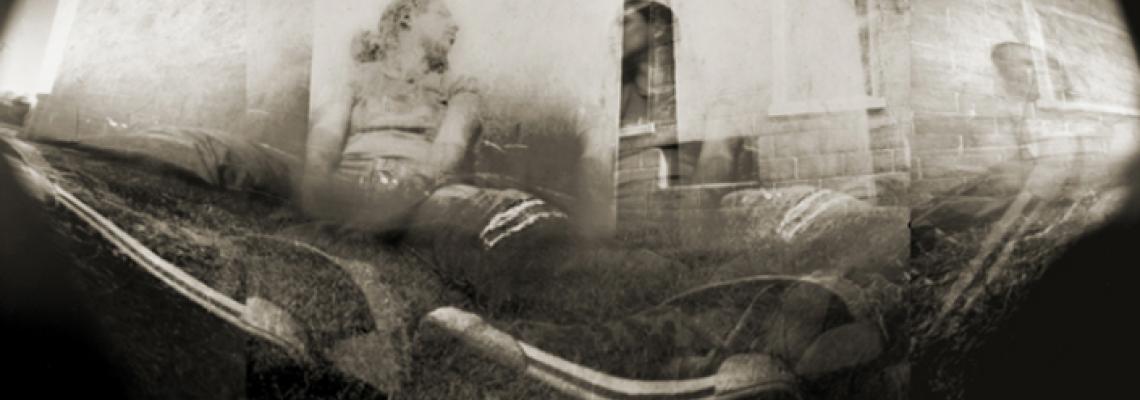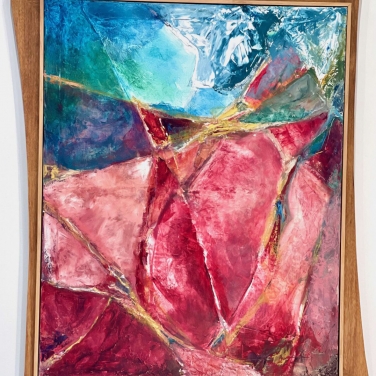About the Exhibit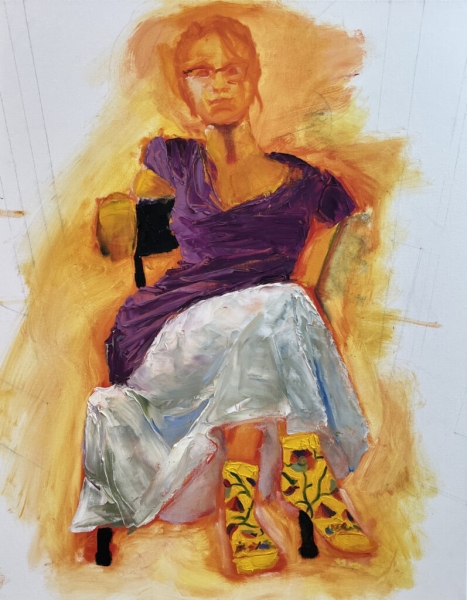
Gail and Hayward Zwerling - An Independent Collaboration
Our collaboration began when Hayward decided to turn his attention towards making frames for Gail’s paintings. While frames have historically worked to showcase a painting, Hayward wanted to make frames that engaged the viewer on their own. At first we worked independently from each other, with no intent to make the painting and frame work together other than its intended purpose.
One day to our surprise, we had a happy accident--a frame and a painting worked synergistically with each other (as seen in pieces such as the "Yellow Socks" painting). It became obvious that there was an opportunity to collaborate.
The collaboration begins with one of Gail's completed paintings and Hayward‘s idea for a frame. These elements are interwoven together on the frame’s design to make the two work together as seen in the "Gemstones" painting. This process moves beyond from individual pieces to form a dialogue between painting and frame that creates a more interactive frame-painting combination.
In the end, we both create what we want to create, knowing there will be synergy between our creations sooner or later.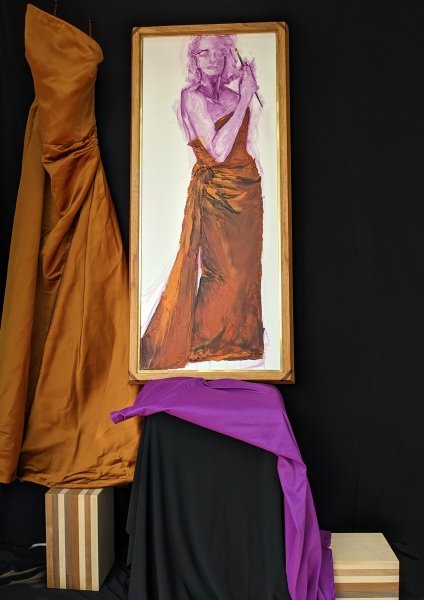
About Gail Zwerling
I have always been drawn to portraits - I love the moment when the likeness of my subject suddenly gels on the canvas. And I find it fun
to incorporate the drape and motion of clothing when I paint a figure.
In addition to the portraits, I have been working on a series of abstracts based on minerals and gemstones at the Harvard Museum of Natural History. My pieces showcase the variety of elements I use to build up a painting. I let my bare canvas show through in places, exposing the base. I often reveal my rough sketching. I use simple monochrome washes for the figure, and layer on thick, textured paint for structures and clothing. The resulting surfaces shift from rough to smooth, and transparent to opaque.
I have studied painting and graphic design at the Massachusetts College of Art and at the School of the Museum of Fine Arts Boston.
I share my love of contemporary art as a tour guide at the deCordova Sculpture Park and Museum.
www.gailzwerling.com
sheshedpainter@icloud.com
About Hayward Zwerling.... Why I make things
An idea/concept needs to be physicalized…

Sometimes I become aware of an idea or concept which I can only expunge from my mind’s eye by bring the idea into reality. For example, I visited the Picasso sculpture exhibition at the Museum of Modern Art in New York City and realized that Picasso serially eliminated the unessential elements of an object until all that was left was the object’s essence. With this concept in mind, I decided I needed to create a sculpture that was “the essence” of a giraffe. This led to the creation of George the Giraffe & Big Poppy and then to Elly the Elephant, all now live on Somerville Community Path at Cedar St.
I had an idea to create a chest of drawers which were of random sizes and arrangement. Thus my rosewood chest of drawers which, unfortunately, is symmetric around its center-point.
My cutting board and coasters arose from an attempt to make an item that appeared to be constructed from pieces of wood that were seemingly random in their size and arrangement.
My picture frames were (mostly) designed to challenge the traditional dogma that the purpose of a frame is purely to enhance the contained picture. I believe that the frame should make a statement on its own, or in collaboration with the painting.
For example, the sculpture on Wall Street called “Fearless Girl” is a strong statement in and of itself. The same is true of “Charging Bull,”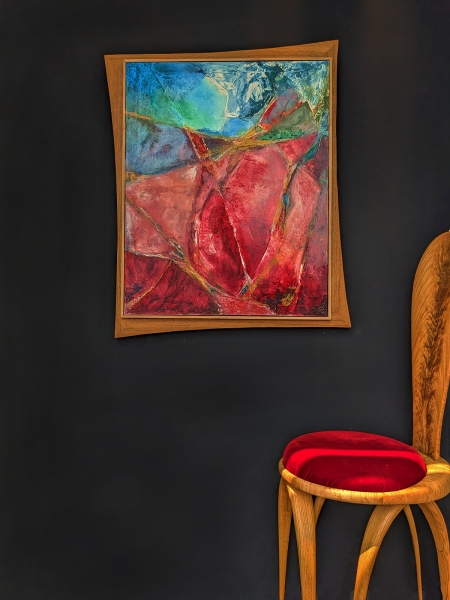 also on Wall Street. But when the two sculptures are placed facing each other, there is a new, more profound message.
also on Wall Street. But when the two sculptures are placed facing each other, there is a new, more profound message.
A much less dramatic example of this is shown in my frame for Gail’s Six Flasks painting. In this frame the brass component extends in front of the painting and maybe suggests to the viewer that they are looking through a window at the flasks.
This concept, that the frame makes a statement on its own, can also be seen in my rotated frame in which the edges of the painted canvas are not parallel to the edge of the frame, forcing the viewer to decide if the bottom of the painted canvas or the bottom of the frame should be parallel to the ground – for it cannot be both.
I will leave it to the observer to decide if this enhances or detracts from the viewing experience.
A piece of wood has commanded me to…
Sometimes a piece of wood tells me what to do. For example, the two sided rocking-horse like frame on my wife’s oil painting of my son was created from a curved branch from a walnut tree which had no other use but did not deserve to be discarded.
A highly figured piece of wood from the black locust tree was too beautiful to be discarded and it needed to be incorporated into an object, a vanity chair, to ensure its continued existence
Theory of my creations: The engagement of the viewer…
In designing my creations, whether it is a coaster, picture frame, piece of furniture, or sculpture, I try to ensure that the object will engage the viewer either intellectually or emotionally.
Theory of my creations: This must be fun for me…
For me, the “fun” part of woodworking is the design and expeditious creation of the first prototype – ie bring the mental concept into a physical reality. Accordingly I will choose to use the tool or technique that will enable me achieve this goal with as little effort as possible. I am not interested in making the perfect dovetail, thus professional woodworkers would likely sneer at the construction quality of my creations, and they are correct. Thus, all of my creations are “prototypes” as they were created as expeditiously as possible and likely include imperfections.
Contact info:
HZCreations@iCloud.com
HaywardZwerling.com
About the Inside-Out Gallery
Initiated in 2009, The Inside-Out Gallery is located in the CVS Window in Davis Square, a unique space that allows the public to view an eclectic array of works from artists and local organizations each month. The mission of the Somerville Arts Council is to cultivate and celebrate the creative expressions of the Somerville community. Through innovative collaborations and quality programming we work to make the arts an integral part of life reflective of our diverse city.
